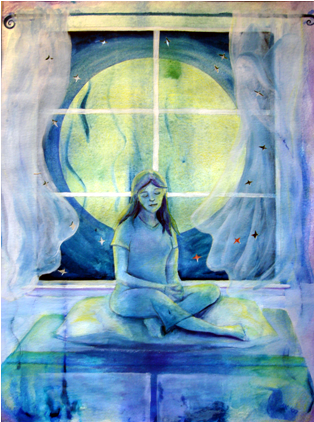
The Realities of Teen Self-Abuse
“Cutters” is a term used to define children and teens who inflict abuse on themselves, often drawing blood and sometimes ending up in the hospital.
While it seems like a new phenomenon brought on by the modern media, it’s actually a sad phenomenon that has been in the shadows for many years.
Drawing on her own experiences from childhood into her late twenties, Connie Hanagan wrote her self-published book Look Beyond the Scars to help teachers and staff understand what children who self-abuse may be going through.
Her goal is to speak at schools, and to use her book to reach out to troubled children and the adults who care about them.
Connie spent the best part of her youth in Boston hospitals, enduring neglect, abuse, occasional compassion, and most of all loneliness.
Now, as an adult, she is letting today’s youth know what she went through, and why, and how she was able to recover and to build a productive and happy life for herself and her son, James.
“There are many reason why children and adults self abuse,” says Connie. “When I was in school, I was a slow learner and was put in a ‘special’ class. Back in the 1950s, special classes were clearly designated for dummies. I was ridiculed, picked on and bullied by my peers.”
She adds, “I hated myself.”
At the young age of eight, Connie was sexually molested by a male neighbor. She says now, “I did not know what sex was, but something told me what he was doing was very wrong and I was afraid to tell anyone.” The fear added to her self-hate.
“Perhaps,” she adds, “I kept silent because of my strict Irish Catholic upbringing where love and affection were rarely shown. I grew up with the fear of burning in hell if I did anything wrong, like most Catholics did back then.”
Look Beyond the Scars chronicles the bullying and abuse Connie endured both in schools at the hands of other children, and in the mental hospitals that the courts sent her to for “recovery,” where she was at the mercy of doctors and nurses who didn’t understand what she was going through.
“I believe that part of my recovery was that I grew up,” says Connie. “I matured, and began to find my voice and was able to talk to people about myself. I started to realize what I had been doing to myself and truly wanted to stop. I stopped because I wanted to stop, I also had my son, James, and I definitely knew I did not want to have him pattern my behavior.”
Now she hopes to help others end their patterns of abuse, and to help people understand what these children and teens are going through.
“What worked for me stopping might not work for everyone,” she says. “But they have to know it’s possible to get beyond the behavior. To find a life without abuse.”

Look Beyond the Scars
by Connie Hanagan
is available at Amazon
Email Connie feet2happy@aol.com
For more information
on cutting
visit www.selfinjury.com
1-800-DONTCUT

What is Cutting?
Cutting is a common type of self-injury, where children and teens make repetitive slices on their arms, legs or other body parts. Some people burn themselves with cigarettes or lighters, others pull out their own hair.
Whatever the context or reason, self-injury seems to function as a coping mechanism. "Cutters" use self-harm to feel calm and in control of their lives, to combat their feelings of helplessness.
However, self-injury is not a healthy coping mechanism - it is a self-destructive behavior that probably reflects deeper, more complicated mental health or personal problems.
People who self-injure can learn to use new and healthier coping mechanisms. New coping mechanisms may include exercising, painting, writing, yoga or dancing instead of hurting oneself.
A process that involves self-expression is often helpful. Whatever works as an alternative method of coping with the feelings of anxiety or stress or "numbness" is often a good start toward recovery.
If you hurt yourself intentionally, or know someone who does, remember you are not alone. It is an unfortunately common problem.
Talk to a counselor, therapist or your health care provider. Chances are they've helped others with this same problem. Whatever pain or bad experiences underlie the urge to self-injure, a professional can help the healing, both inside and out.
Source: www.essortment.com/articles/self-injury_100006.htm
 |